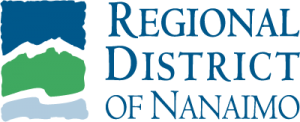Regional District of Nanaimo releases Sustainable Site Planning Guide


Posted in: News Item
Date Posted: 2021-03-01
Organization Name: Regional District of Nanaimo
The Regional District of Nanaimo (RDN) has released its Sustainable Site Planning Guide, the third in the Green Building Guidebook Series. The new guide is tailored to the habitats and landscapes found within our region and is one of the many tools developed by the RDN that homeowners and builders can use to lower the environmental impacts of their construction, landscaping and major renovation projects.
“We enjoy considerable ecological diversity in our region and this guide features the latest in sustainable best practices to help protect our natural assets,” said Chair Tyler Brown. “The guides are part of the Green Building Action Plan, developed to support the RDN’s strategic goals to protect and enhance the natural environment and to be leaders in climate change adaptation and mitigation.”
Sustainable site planning takes into consideration the characteristics of the local area such as water, soil and climate before site design begins. It also strategically reduces the impact of development, buildings and infrastructure on our natural ecosystems such as wetlands and shorelines, and natural systems such as the water cycle; all of which contribute to improving local resilience.
In rural areas, single family dwellings account for approximately 90 per cent of building permits issued by the RDN. With many homeowners choosing to do the work themselves, the guide leads them through a an easy to follow, three-step process:
- Local Context Evaluation: Understanding the area beyond the property boundaries to determine how the property is impacted by what is around it.
- Site Assessment: Identifying the most suitable areas for development. Areas with the fewest risks often offer the most affordable option.
- Sustainable Site Plan: Examining the information gathered in steps 1 and 2 to develop the plan. The ideal location for buildings, structures and other development start to emerge after examination of what is present and influences the site’s natural features, ecosystems and processes.
“There are a number of green building guides available, but they often cover large geographic areas and can be difficult for residents to adapt to their location,” said Director Bob Rogers, Electoral Area Services Committee Chair. “This new guide will enable residents to easily adopt region-specific sustainable practices on their land that integrate with natural processes and support habitat preservation.”
For homeowners not undertaking the work themselves, the guide provides them with the knowledge needed to better communicate with their site contractor as well as to monitor the work as it is underway to ensure the sustainable practices identified in the plan are included.
By using the Sustainable Site Planning Guide, residents can also increase their home comfort while decreasing long-term costs and maintenance. The other two guides in the series, Rainwater Harvesting Best Practice Guidebook and Residential Renewable Energy Introductory Guidebook, further help residents make their properties greener and more resilient to climate change.
All three guidebooks can be downloaded from the RDN’s website at rdn.bc.ca/green-building-series-guidebooks. To learn more about sustainability in the RDN, visit rdn.bc.ca/energy-and-sustainability.
